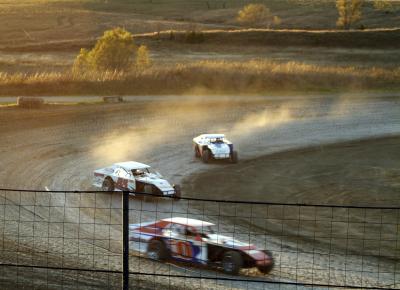
Wheel alignment isn't all that physically difficult or hard to understand -- it just requires some very specialized equipment to determine wheel angle. After that, it's all just turning bolts and tweaking until you get everything in spec. A few little turns here and there can make the difference between a car that provides safe, predictable performance and one that will chew through every tire and drop of fuel you invest right before crashing into a tree.
Camber refers to the inward or outward tilt of your tire. A completely vertical tire has no camber, or zero degrees of camber. One that leans outward at the top has a certain degree of positive caber, while one that leans inward has negative camber. Negative camber helps your tires to stay plated while turning, but diminishes braking and acceleration performance as well as stability at high speed. Positive camber -- outward tilt -- has no real benefits in terms of handling, braking, acceleration or stability. Excess negative camber will cause your tires to wear faster on the inside edge than the outside, and positive camber will cause it to wear faster on the outer edge.
Imagine looking at your tire from the side, then draw an imaginary line from the upper ball joint through the lower joint all the way to the ground. Now imagine drawing a completely vertical line right through the wheel's center. You'll find that the line you drew through the ball joints hits the ground just ahead of the vertical line. The ball joint line is your wheel's pivot axis, while the vertical line is where the tire force is applied. The greater the distance between the pivot line and the vertical line -- the higher the caster angle -- the harder the wheel will try to return to center while turning. More caster angle equals increased steering effort, but the payoff is greater stability at speed and better steering precision and feedback.
Imagine standing on the hood of your car by the windshield with your body facing forward and your eyes cast straight down at the wheels. If you could see the tires through the fenders, you'd note that they probably don't point straight ahead; they either angle toward each other at the front or away from each other. If the wheels point toward each other in a toe-in condition, they'll always try to pull the car toward its center. This increases stability at speed, but hurts handling response. Toe-out can help to make the car more nimble, but can also make it a bit twitchy. Zero toe, or a perfectly parallel setting, increases fuel economy and tire life because the tires aren't sliding sideways – as known as scrubbing -- as you drive down the road.
Mechanics have several ways to determine wheel angle, but many modern shops use a laser alignment system. Laser systems attached to the wheel hubs and suspension project a perfectly level beam of light on a degree chart, and the mechanics adjust the suspension accordingly. All cars have a means to set toe angle, usually by turning a threaded link on the steering linkage. This lengthens or shortens the distance between the fronts of the tires. Caster angle isn't usually adjustable except on dedicated race cars, but many manufacturers provide some means of camber adjustment. Strut suspension systems may use an adjustable camber plate atop the strut to move it either inward or outward, while A-arm suspensions will generally use shims set between the upper control arm and the frame.